11 Times Tech Really Did Take Our Jobs
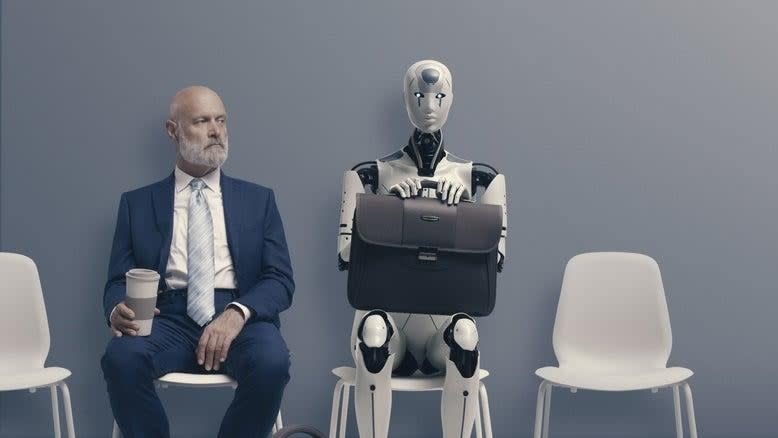
- Oops!Something went wrong.Please try again later.
Artificial intelligence is replacing hundreds of jobs across the U.S., creating skepticism and uncertainty about the future of humanity. It is a daunting development as even the creator of AI has warned about the technology’s potential takeover.
The reality is that jobs have been overtaken by new developments in technology for centuries, paving the way for mass production and creating outrage among those who relied on those jobs. From women who worked in the textile industry to switchboard operators in the 1970s, all the way through the 2000s when video streaming services took the place of physical video stores.
Read more
With every technological development that eliminated the need for certain jobs, people cried out in protest, including economist Maynard Keynes, who coined a phrase for the phenomenon.
“We are being afflicted with a new disease,” Keynes wrote in a published essay in 1930. The disease, he wrote, was “‘technological unemployment.’”
“From the sixteenth century, with a cumulative crescendo after the eighteenth, the great age of science and technical inventions began,” he added, referencing the turn to other methods of mass production, which, he said, has been in “full flood” since the start of the 19th Century.
Looking to the past may be a good starting point when looking at the future of technology in the 21st Century after a report by Challenger, Gray, and Christmas, Inc. found nearly 4,000 jobs cuts last month were replaced by AI. The fears of continued AI advancements are real and the effect it is having on workers’ livelihoods cannot be understated, but if the past shows anything, humans are resilient and capable of adapting.
And, as Walter Reuther, the founder and former President of the United Automobile Workers Union and labor and civil rights activist from the mid-1940s through the 1960s once said, “Either we shall use our new machines and technology to help us create security and dignity in the construction of a brave new world, or the impact of jet propulsion technology upon a huffing and puffing model T distributive system will dig our economic graves.”
The following jobs have become almost or completely obsolete thanks to technological advancements and show that history is not so different from today.
1811: Textile Industry
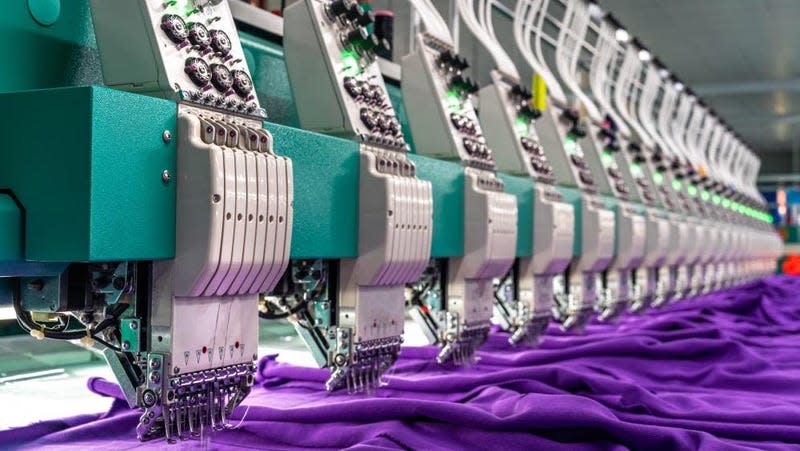
In the early 1800s, Luddite became a blanket term for people who opposed technology, as weavers and textile workers stood up in protest of machines taking over their factory jobs. Many of the textile workers had spent years, possibly decades honing and perfecting their craft when cost-saving machinery started to take over.
Gig mills, a wool shearing machine, produced wool at a faster rate using only one person instead of several, and the stocking frame machine sped up the process of producing stockings to six times the rate as before.
Some weavers protested by smashing the textile machines while others burned factories or exchanged gunfire with guards and soldiers.
The military eventually quashed the rebellion by 1813 and instated a new law that the act of damaging machine equipment was punishable by death.
1940: Agriculture Jobs
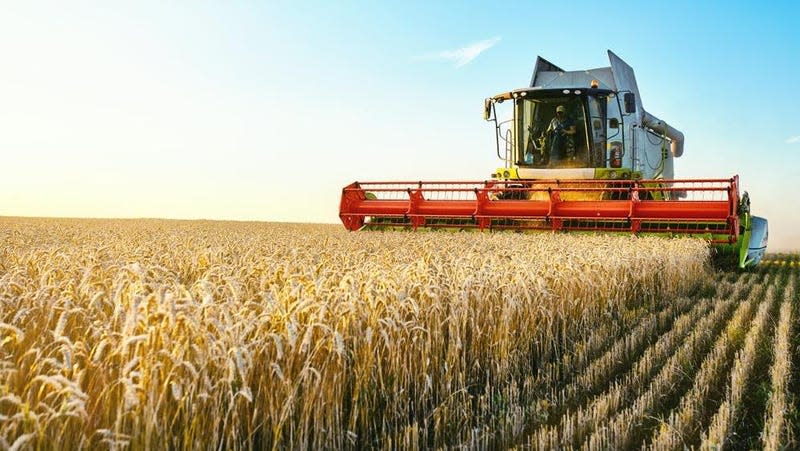
Economist Maynard Keynes argued in the 1930s that technology was to blame for the economic downturn during The Great Depression. It was a time when labor-saving changes to jobs meant putting people out of work, such as was the case when the tractor was introduced.
The tractor was first released in 1902 but was too big and expensive for everyday farmers to get their hands on one. But when Henry Ford produced the Fordson tractor in 1917, it saturated the market.
As new technologies were introduced from power lifts and rubber tires to diesel engines, the tractor became a major cog in agriculture. When it was first introduced, roughly one-third of Americans worked on farms but by 1950, that number had dropped to only 10%, according to The Atlantic, and by 2010, that number fell to only 2% of the American workforce.
1945: Elevator Operators
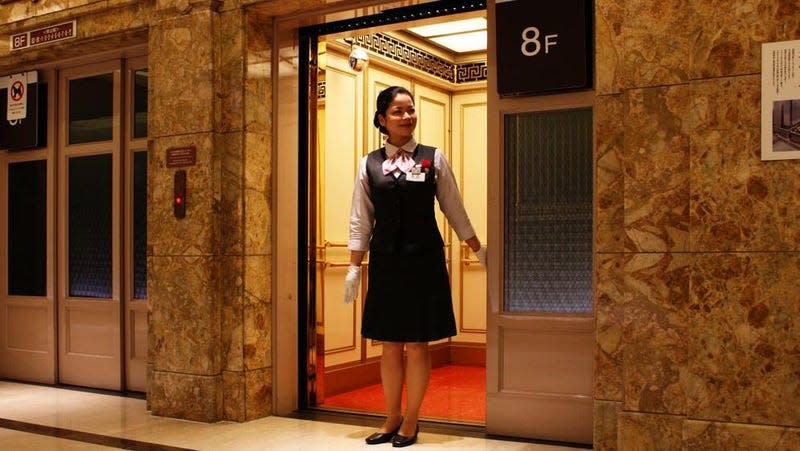
Elevator Operators were essential to getting from one floor to the next in high-rise buildings in the early 1900s. The elevators worked on a pully system, necessitating a paid worker who guided the car to each stop by hand. These old-school elevators were not the safest technology, with a gap between the floor and the car, meaning if a person misjudged the distance and fell, the operator wouldn’t have time to stop.
To combat this problem, the elevator industry added safety bumpers and an automatic stopping feature, before finally creating the driverless elevator. Much like the uncertainty over driverless vehicles today, the new-age elevator did not make a splash for people who feared using it. “People walked in and looked and walked right back out,” NPR contributor Lee Gray said on a podcast. “They would quickly step back out and try to find someone to say where’s the operator?”
But in 1945, everything changed. That year, New York City elevator operators went on strike, costing the city $100 million in lost taxes and preventing 1.5 million office workers from getting to their jobs. It was then that driverless elevators replaced hand-operated ones, effectively eliminating the position for good.
1950: Automobile Workers

In the early 1950s, automobile manufacturers began using technology to speed up production and cut down on production costs. One example is Ford Motor Company, which moved its production base to Brook Park, Ohio in 1949, and effectively cut its manpower by 90%.
More than any other area, the automotive industry was most affected at the time as it adopted robots to replace lower and middle-income workers who performed manual labor.
“Our evidence shows that robots increase productivity. They are very important for continued growth and for firms, but at the same time they destroy jobs and they reduce labor demand,” Acemoglu said. “Those effects of robots also need to be taken into account.”
President John F. Kennedy was asked to address the growing issue of technology taking over jobs in 1960, but he voiced his support for the changes, saying the machines were “not created ... so that they can destroy our prosperity and our economic health,” but instead said job seekers should work to transfer their skills.
A 2020 study by MIT professor Daron Acemoglu revealed that in the U.S., every robot added to the workforce per 1,000 workers resulted in a wage decline of .42%, while the employment-to-population ratio decreased by .2% — equaling the loss of 400,000 jobs at the time.
By introducing robotic technology into the automotive industry, employees were replaced by machines that could produce more for less, including welding jobs that paid $12 an hour. The replacement of technology meant that companies could effectively pay only $3.50 per hour while increasing output.
Kennedy said in his speech, that “each advance—each more efficient machine—has not only increased production and raised our standard of living, but it has also improved drastically the hours and the conditions of labor. In an eight-hour day, five-day week, the modern worker produces more than twice as much as his grandfather did, working twelve hours a day, six days a week.”
1960: Warehouse Workers

Although warehouse workers are still commonplace today, there is one aspect of the job that has largely become obsolete — those who sorted the material goods. Up until the 1960s, warehouses hired employees to sort each item as it enters a warehouse, but as technology exploded, those jobs were rendered unnecessary.
Electronic equipment took the place of human workers, which was ideal for production companies that wanted to save a buck, but it put thousands of people out of jobs.
President John F. Kennedy praised the changes in his speech on June 7, 1960, saying the replacement of machines will positively impact the future. “In the future, as the complexity, the versatility, and the precision of modern technology continues its inevitable advance, thousands of processes and functions now performed by men will be done, more cheaply and more efficiently, by machine,” he said.
1965: Switchboard Operators
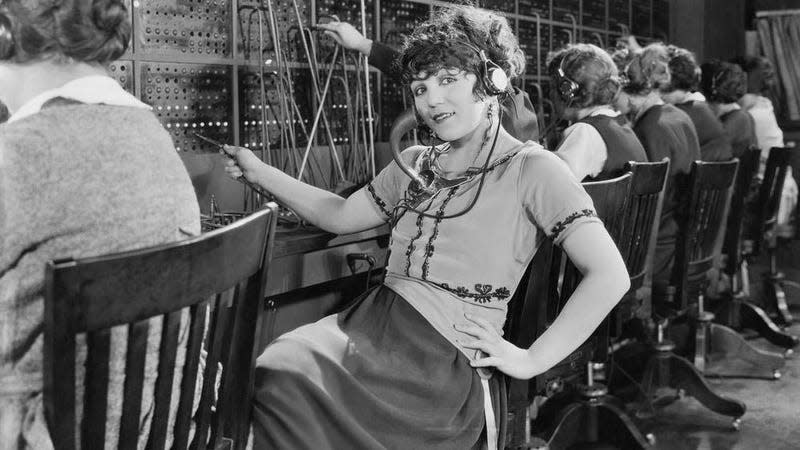
Switchboard operators were once an essential part of telephone communication in the late 19th- into the early 20th century. During that time, technology wasn’t advanced enough for people to directly dial a phone number and were instead greeted by a switchboard operator when they picked up their phone.
Although a replacement for human operators and switchboards was invented in 1892, only 16 years after Graham Bell patented the telephone, two decades later only about 300,000 out of 11 million telephone subscribers had automated service, meaning they no longer relied on operators.
Ironically, the Bell companies didn’t want an automated switching service, which was initially used only by independent telephone companies. “Bell wanted to make using the phone as easy as possible for customers,” Milton Mueller, a professor of public policy at Georgia Tech specializing in communications and information, told Econ Focus in 2019. “So-called automated switching meant the customer was actually doing work, as opposed to just picking up the phone and telling the operator what he or she wanted.”
It wasn’t until after World War I that Bell management realized the benefits of implementing an automatic switchboard as wages for switchboard operators began to rise. The company started its plans to adopt the new system in 1919, but it wasn’t until 1965 that it implemented its first fully electronic switching system.
At the height of its demand, there were 342,000 switchboard operators, which declined to less than 250,000 in 1960 and dropped to only 40,000 by 1984. But today, there are around 68,000 operators who still use switchboards to relay incoming, outgoing, and interoffice calls in the U.S., according to the Bureau of Labor Statistics.
1980s: Pin Boys

Pin boys in the 1980s and earlier were essential to the joys of heading to the local bowling alley for a night of friendly competition. Standing in the back of the alley, behind the pins and the bowling lane, would be a person waiting to reset the pins and return the bowling ball to its owner.
But by the late 1980s, these jobs were all but gone as automated pinsetters replaced humans, leaving some people relieved and claiming pin boys were “too often indolent, unreliable, and impertinent,” Robert Peterson, a former pin boy, wrote in a 1988 op-ed for Sports Illustrated. Peterson argued against pinsetters, saying his experience as a pin boy showed they were far more reliable than a machine, writing that on any given night, a pin boy “could have retrieved 1,500 pins.”
At the time, Peterson said bowling alleys were considered only slightly more respectable than pool halls in the eyes of the public, and acknowledged that the automated pinsetter was changing that, but it detracted from the personal touch of a pin boy.
“No doubt the automatic pinspotter represents progress,” he wrote, adding, “although in a contest for speed and efficiency over a three-game series, I would put my money on a pinboy.”
1989: Typesetter
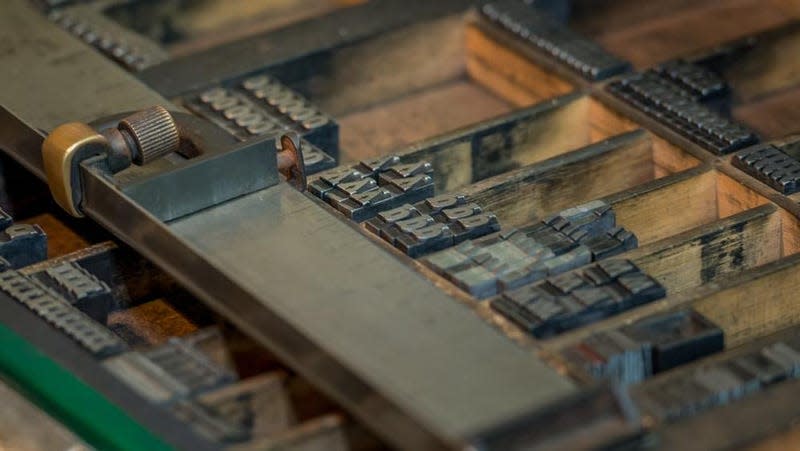
Before digital printing, there were Linotype operators, or typesetters, who used the Linotype machine to print the written word. The machine was introduced in 1884 using hot metal blocks to imprint words on a page and was widely used by the 1970s to print newspapers and magazines.
Unlike hand-setting, where each letter, space, and number would be set by an operator individually, the Linotype used a keyboard of 107 keys, each marked with a capital or lowercase character, spaces, and numbers. The New York Tribune used the Linotype for two years before it became more widely known.
A photo of the machine was published in an 1889 article in Scientific American and was described as “the latest, and in many respects the most remarkable, of the numerous machines which inventors and mechanics have from time to time devised in their long-continued efforts to find some practical means by which to supersede or cut short the tedious work of typesetting.”
The Linotype drastically sped up production, with a skilled operator producing up to 6,000 ems per hour, compared to hand-setting which only produced 250 ems per hour.
But as digital printing took over, the need for typesetters dropped, allowing book publishers, newspapers, magazines, and more, to create short runs of their products while also cutting costs.
1990: Packaging Workers

In the early 1990s, packaging machines came onto the scene as production companies searched for ways to once again cut down on costs.
A report by MIT in 2020 said its findings showed: “Industrial robots grew fourfold in the U.S. between 1993 and 2007 ... to a rate of one robot per thousand workers.” The report added that Europe was slightly more advanced than the U.S., with the rate of industrial robots growing to 1.6 per thousand workers over the same time period.
The notion that tech jobs would be the wave of the future continued to grow in the 1990s, with the Bureau of Labor Statistics predicting in a 1992 academic journal that it would create 18 million jobs by the end of the decade.
“If you look at what has gone on over the past decade, it’s apparent that the new jobs are going to be mainly white collar,” Tom Nardone, then-economist at the Bureau of Labor Statistics said in the journal. “Over the long term, there will be a lot of technical jobs, and jobs in the health field.”
2001: Travel Agents

Travel figures suggest the 9/11 tragedy was a pivotal point in how people travel, according to The Guardian. Airlines realized they could move online, using websites to update flyers, while online booking sites took over to replace the travelers’ need to pay an agent.
Within the next decade, the number of brick-and-mortar travel agencies dropped drastically, decreasing by 60% in 2015 since the early 1990s as people moved to social media and other apps like Airbnb, Priceline, and Booking.com.
The travel industry shifted again with the creation of Facebook, which introduced a new age of sharing, which later included Twitter, Pinterest, and Instagram, effectively reducing the number of in-person travel agents, and forcing travel companies to move online.
A new 2023 report by Statista found that an overwhelming 72% of people prefer to book online, a significant contrast to just 12% who utilize travel agencies to book their trips. The report says 53% of those booking online travel cited the speed and convenience of personally tailoring their schedules as the reason for using online sites, while 47% said it’s easier to compare prices and find the best deal.
2010: Video Store Clerks
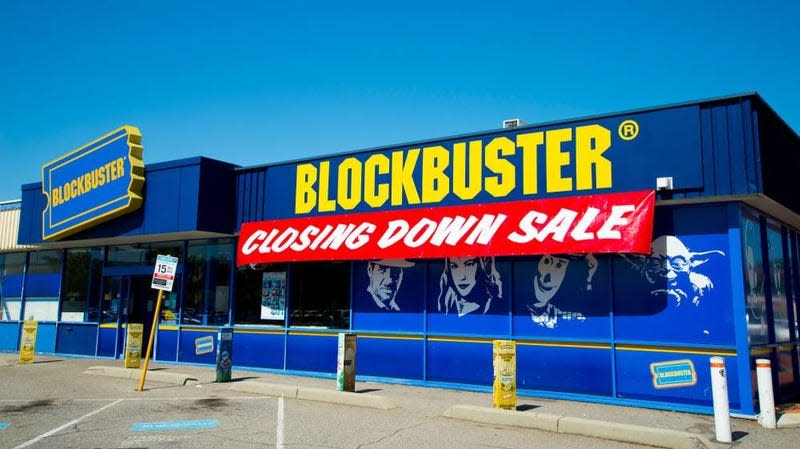
Video stores used to be a staple of weekend movie nights — who doesn’t remember browsing the Blockbuster aisles for movie rentals at only a few dollars each before heading up for the personal interaction at the checkout counter? But with the introduction of streaming services, video stores slowly went out of business, and with it, the store clerks.
Blockbuster and other video stores eventually went bankrupt, eliminating thousands of jobs. At the height of its popularity, Blockbuster had more than 9,000 stores worldwide, but today only one remains, located in Bend, Oregon.
Blockbuster may have survived if it had bought Netflix when the streaming service was still just a startup. The company reportedly considered buying Netflix for $50 million, equating to $88.3 million today.
More from Gizmodo
Sign up for Gizmodo's Newsletter. For the latest news, Facebook, Twitter and Instagram.

